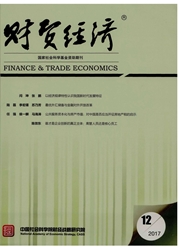

 中文摘要:
中文摘要:
提高自主创新能力是我国经济增长由要素驱动型向创新驱动型转化的根本途径,而研发支出是创新的前提。政府研发支出对基础研究发展、激励企业自主创新等发挥着重要作用。现实经济中,政府可以对企业R8LD给予财政补贴,政府也可以直接提供R&D,不同R&D政策对经济影响的传导机制和作用效果差别较大。本文在包含水平创新的内生增长模型中考察了政府R&D补贴与政府直接提供R&D两种政策的经济增长效应与社会福利效应。研究表明,政府直接提供R8LD有利于促进经济增长,而政府R&D补贴更有利于改善社会福利。对现阶段我国R&D政策的建议是,增加政府对企业的R&D补贴力度。
 英文摘要:
英文摘要:
Innovation is the fundamental way for China's transformation from the factor-based growth to the innovation-based growth, and R&D investment is the precondition for innovation. Government R&D investment plays an important role in both basic research and entrepreneur innovation. Governments could offer R&D subsidy to firms, and provide R&D directly too. However, the effects of R&D policy on growth and social welfare are quite different. This paper explores the impact of government R&D policy in an endogenous growth model with horizontal innovation. It is found that, government R&D provision is good for growth, and government R&D subsidy is good for social welfare. The policy implication of this paper is that the government should increase the R&D subsidy for entrepreneur innovation.
 同期刊论文项目
同期刊论文项目
 同项目期刊论文
同项目期刊论文
 期刊信息
期刊信息
